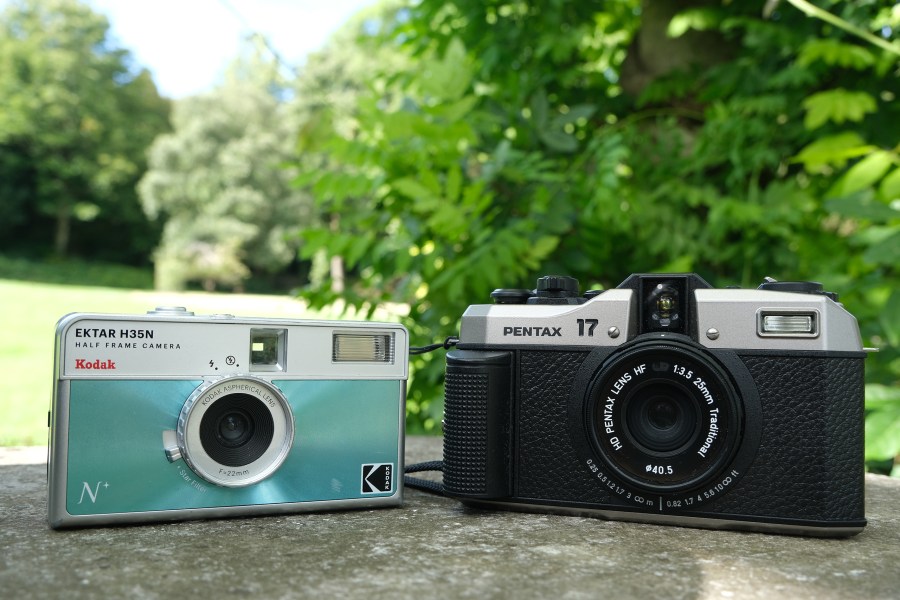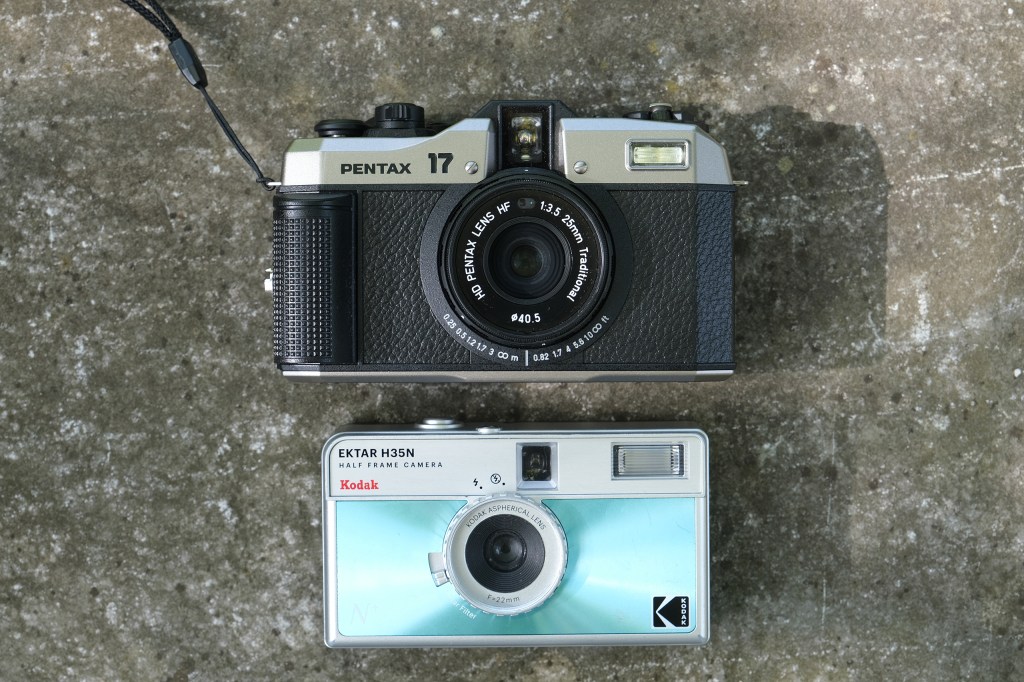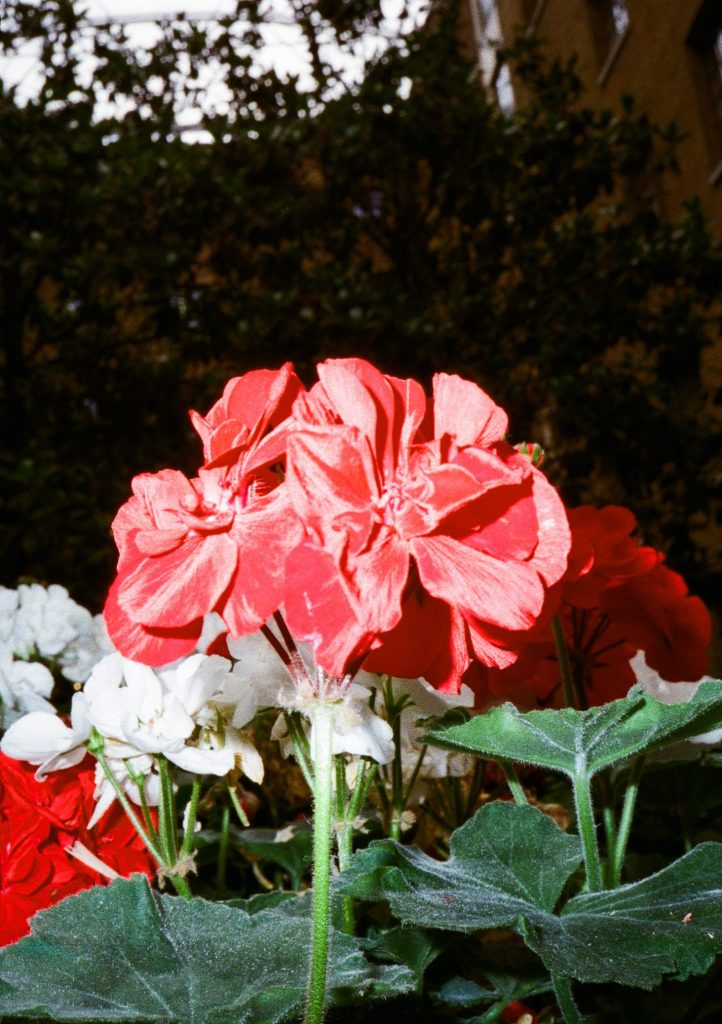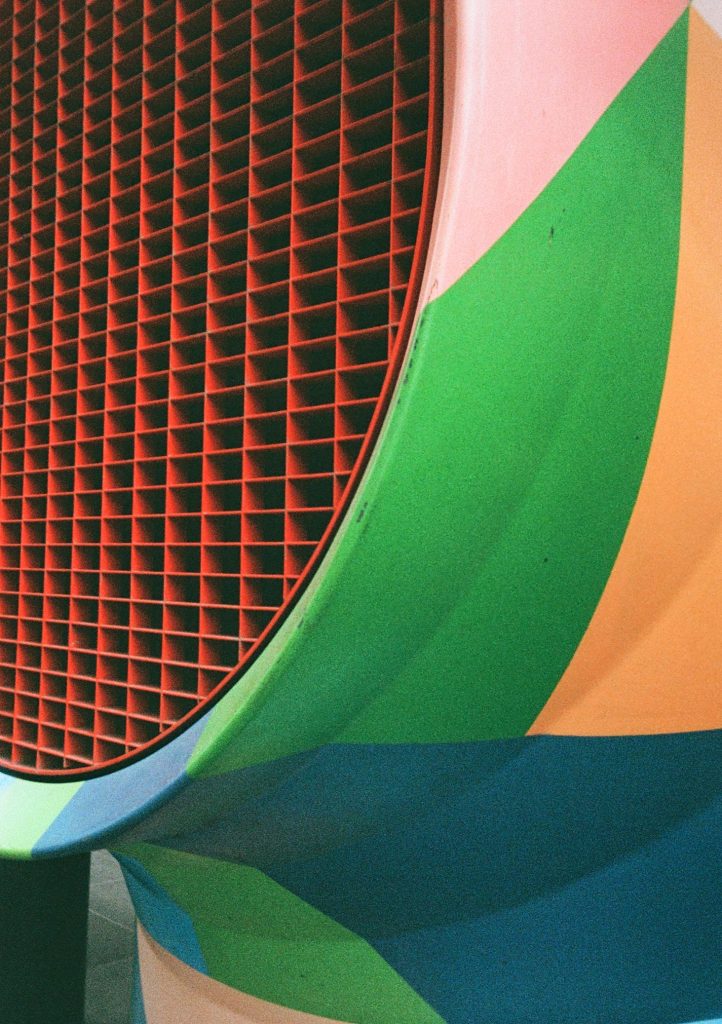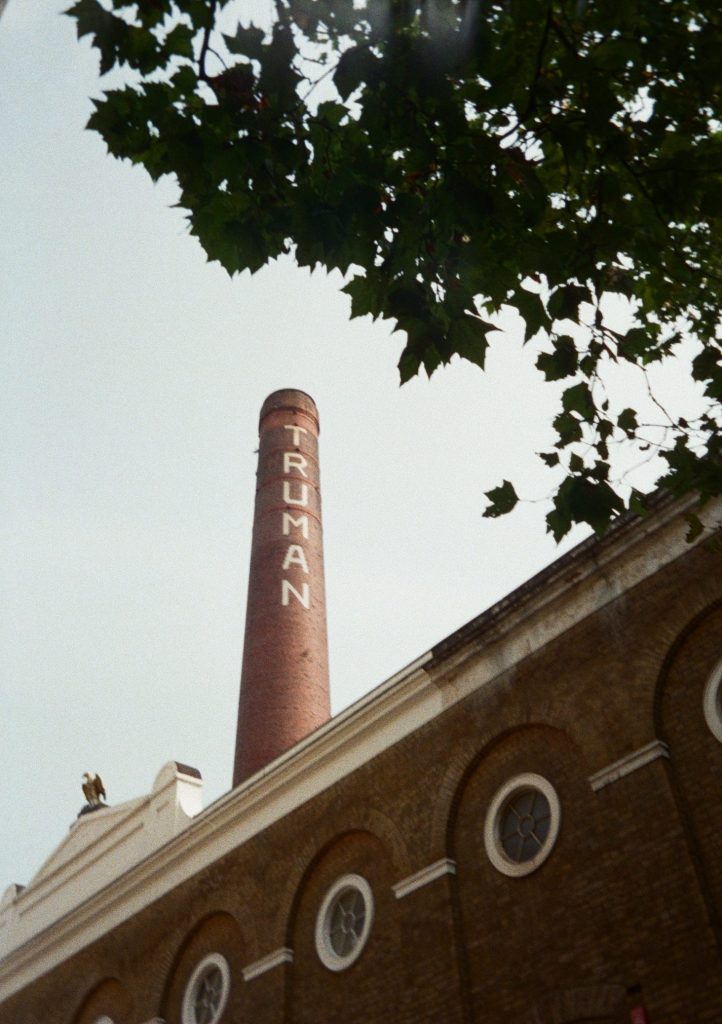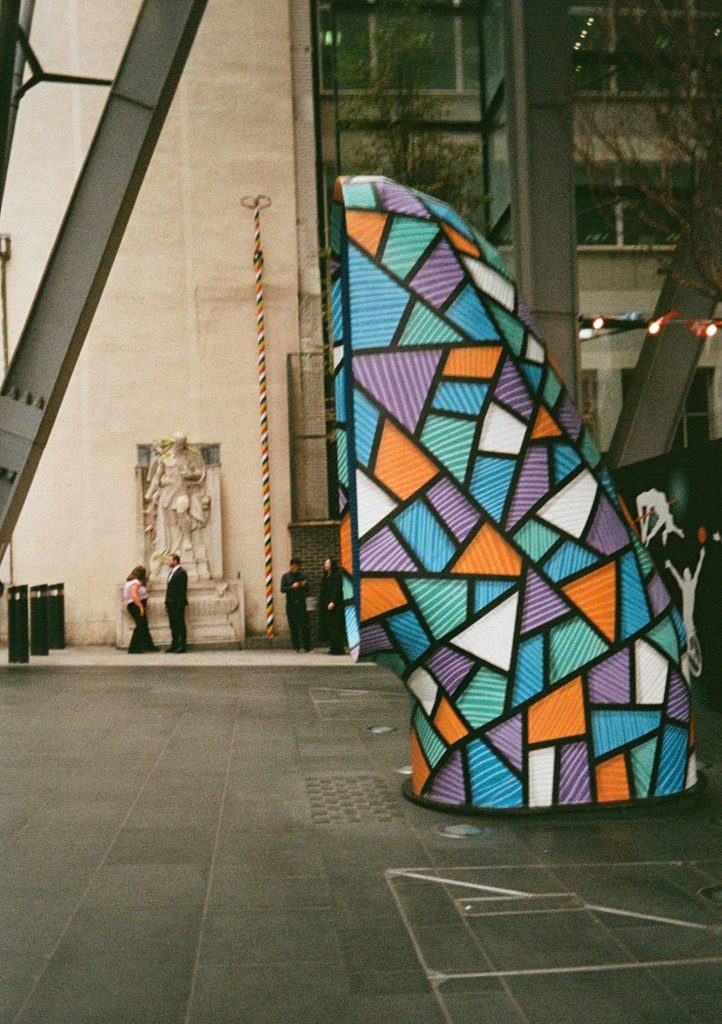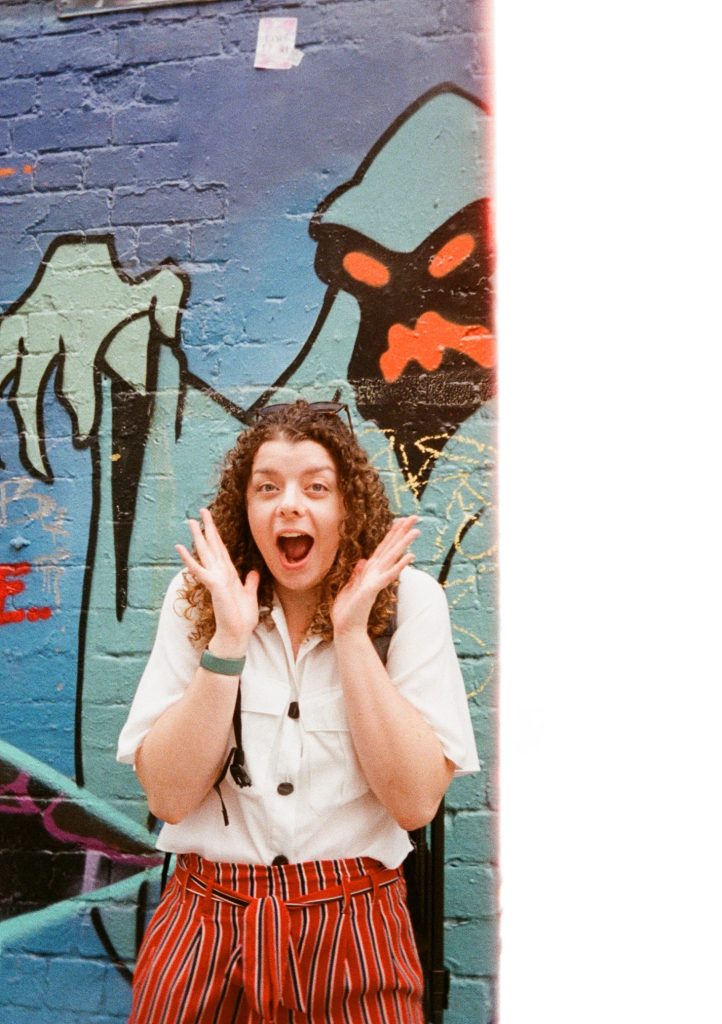Announced in June, the Pentax 17 is a premium 35mm half-frame film camera. A brand-new concept that takes a step up from a basic 35mm point-and-shoot like the Kodak Ektar H35N. We explore some of the differences and similarities between them.
In this comparison I take a look at two different ends of the half-frame spectrum. The new premium Pentax 17, which combines elements of modern and traditional film photography in a heavenly combination for social media users. Plus, the Kodak Ektar H35N, a basic, budget-friendly point-and-shoot which gives disposable camera lovers a reuseable step-up. Let’s find out which is best or right for you…
Body
Both cameras are half-frame and take 35mm film.
The Kodak Ektar H35N is a fully plastic body and looks like a typical point-and-shoot camera. It is a step-up from a disposable camera and minimal in terms of on-body dials and features. It weighs only 110g and measures at 110(W) x 62(H) x 39(D) mm, which is lighter and smaller/slimmer than the Pentax.
The Pentax 17 takes point-and-shoot to another level again, without becoming a fully manual camera like other 35mm film SLRs. It is quite modern looking with some design from traditional film cameras. It has a small handgrip on the front, which is where the battery is also placed, which makes the camera comfortable to hold. The top and bottom sections are made of magnesium alloy, with panelling and dials at the top made from plastic. The range of dials provides enough manual and automatic functions to make it easy to use and provide a wide range of photographers different shooting options. It weighs 290g and measures 127(W) x 78(H) x 52(D)mm.
When it comes to lenses the Kodak has a 22mm (32mm equivalent in full frame) glass f11 fixed-focus lens. In comparison, the Pentax holds a 25mm f/3.5 (37mm equivalent) fixed prime, which produces images that are slightly more cropped than the Kodak. It also has six different manual focus zones, with distances ranging from 0.25m to infinity (everything from close-up to landscapes). As such, you need to change the mode based on the estimated distance between yourself and the subject.
In terms of viewfinders, the Kodak has a rather basic rectangular viewfinder. The Pentax, whilst also rectangular has two sets of composition lines, one for standard images and the smaller set for close-ups. In comparison to the Kodak, the Pentax’s viewfinder is much clearer and brighter, as well as being easier to compose the image and clearly seeing how your subjects fit in the frame.
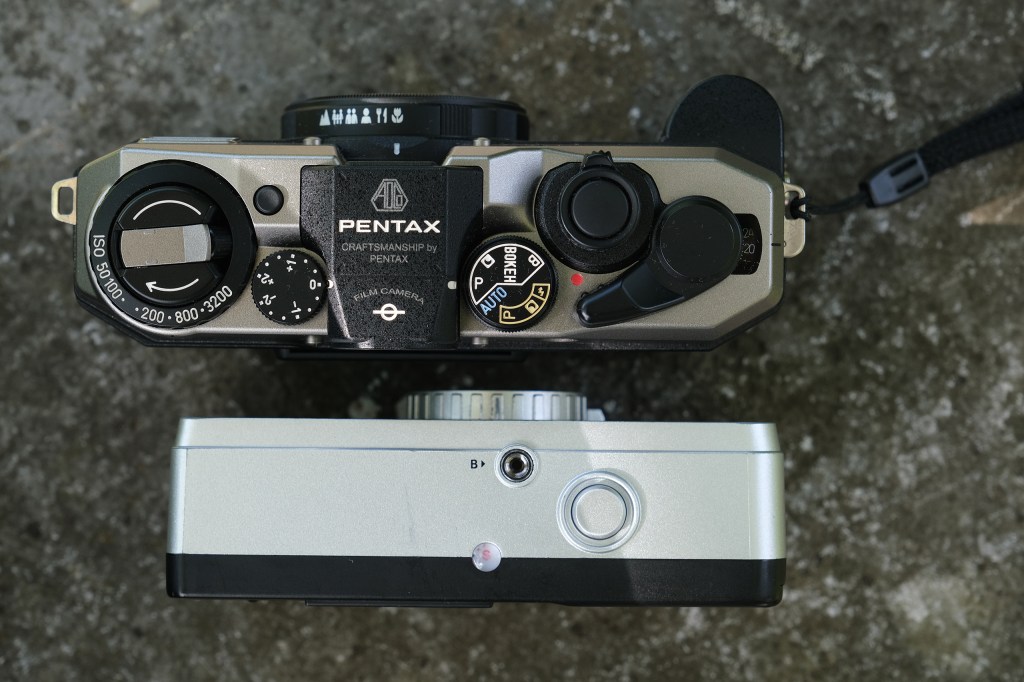
Features
When it comes to the features available, on the face of it both cameras feel quite similar. The Kodak has a built-in flash, Bulb for long exposures and a Star filter. On the Pentax there is option for Bulb, Flash, and Bokeh alongside the standard Program and Auto modes. Both have a cable shutter release port, though the Pentax requires a certain release cable. Despite having a few of the same features, the Pentax’s method of operating them and their delivery certainly feels more sophisticated.
The Kodak’s nifty star filter can be turned on for adding star effects which is quite nice on different light sources. On the Pentax, there is Bokeh mode (which forces the camera to set f/3.5), which adds some nice blur.
The manual zone focus is one part of the Pentax 17 that I wasn’t keen on during my review. It’s very much a process of estimating the distance, set it up and hope for the best. But when it works and you get the distances right, the focus is sharp. The Kodak has a fixed focus, with approximately 1 metre being the closest you can get to a subject before it becomes out of focus. It cannot focus close-up like the Pentax.
Neither of the cameras allow you the option to manually set shutter speed or aperture. Though on the Pentax you can set film ISO, which determines the other settings. The lens adjusts to between f/3.5 and f/16, and shutter speeds between 1/350sec and 4 seconds. But can adjust exposure compensation. On the Kodak, the lens is F11 (F8 with the flash on) and has a shutter speed of 1/100s. The Kodak will perform best in well-lit environments, with ISO 100-200 being optimal in bright light and ISO 400 ok for overcast days.
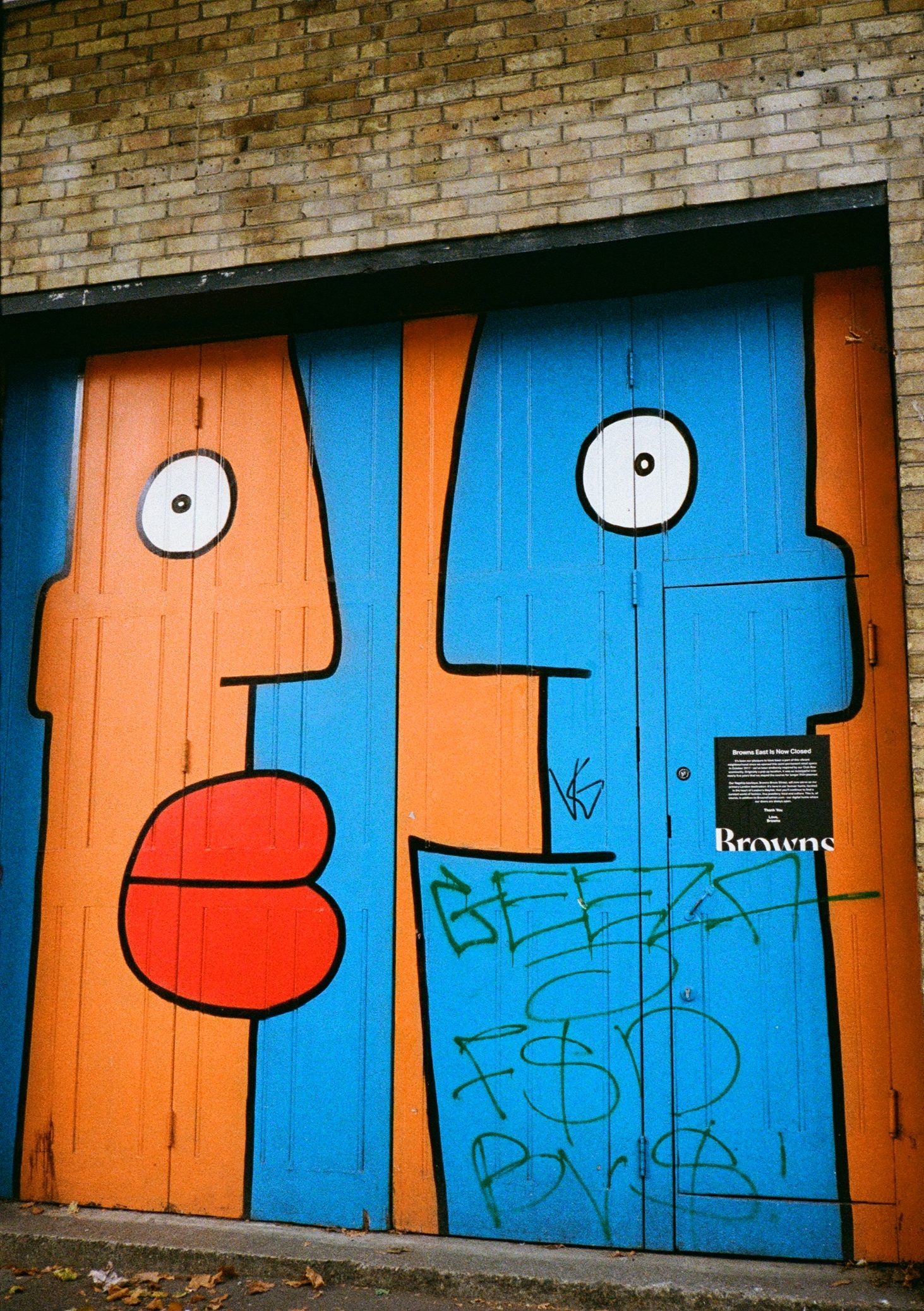

Performance
Generally, the Pentax produces more detailed and consistent images. More colours, tones and contrast were picked up. In most cases the Kodak produced some nice images, but in situations for example when pointing the camera up towards the top of a building and the sky, results were very overexposed. It did, however, work well in lower lit scenarios and with the flash. The star filter on the Kodak also produces some really nice results and works well, particularly on individual lights.
Pentax 17 vs Kodak Ektar H35N – Value for money
The Pentax 17 is retailing for a whopping $500/£499.99, and the Kodak Ektar H35N is a popular budget friendly option which can currently bought for around $59/£65.
As I found in my review of the Pentax, $500 is a lot of money for the camera you get. It feels more robust than the Kodak, but there are still some plastic toy-like qualities which don’t live up to the premium price tag. You do get some excellent, well-lit and detailed images, which are of much more consistent and better quality than the Kodak.
Pentax 17 vs Kodak Ektar H35N – which is best?
There isn’t necessarily a winner in this comparison, which will be best for you will depend on the type of photographer you are and what you hope to get out of the camera. Both are half-frame and will ultimately give you more images per roll of film. They are compact, lightweight and fun to use.
If you are new to film photography or someone transitioning from smartphones, want to take a step up from a disposable camera without breaking the bank, and enjoy the fun and nostalgia of film then the Kodak is probably a good place to start with.
If you want to take another step up, perhaps have more photography experience, want a more compact body than a traditional film SLR, and more manual control and versatility rather than the complete simplicity of the point-and-shoot then the compact Pentax 17 is a good camera.
There are also alternative half-frame cameras and point-and-shoot cameras out there, that are also somewhere between the two price points seen here (e.g. the Olympus Pen EE-2), so it’s worth having a look at those too. See our buyers guides for more.
Further reading:
- The Compass camera – the World’s most complicated camera?
- How to check if a film camera works
- How to make a pinhole camera
- Best instant cameras and printers
Follow AP on Facebook, Twitter, Instagram, YouTube and TikTok.

